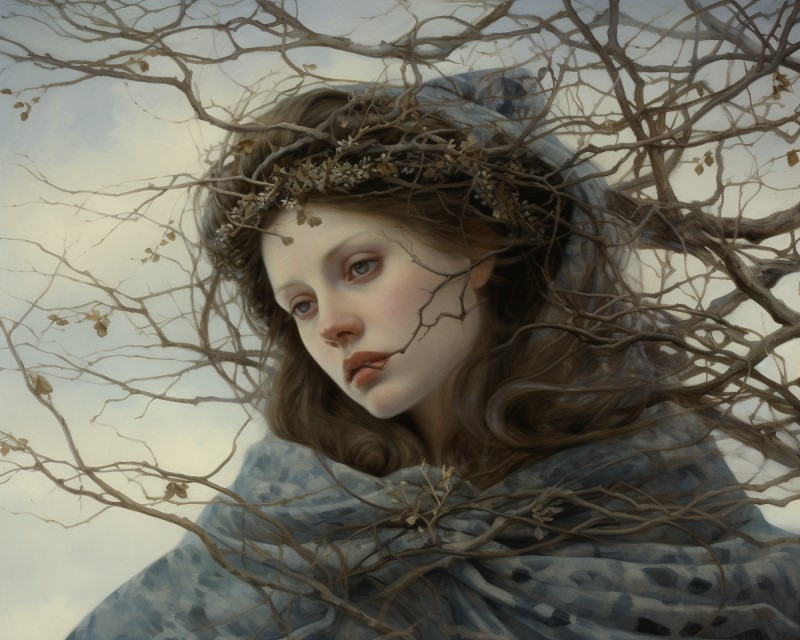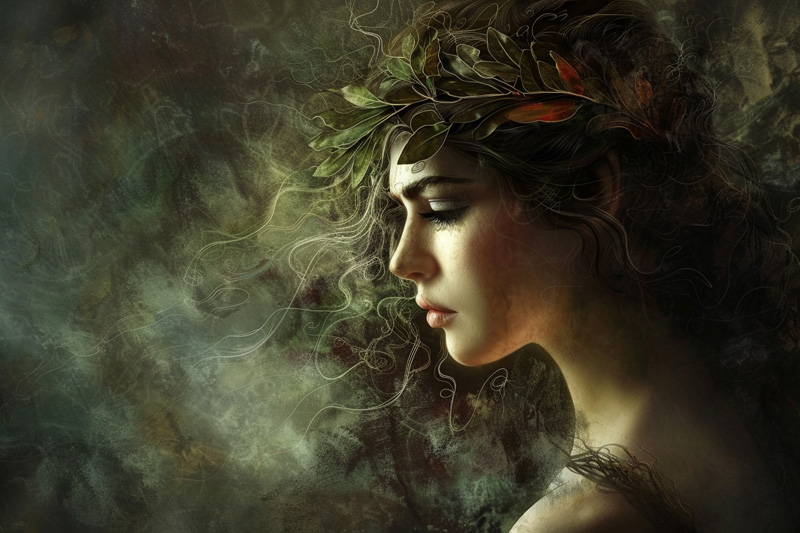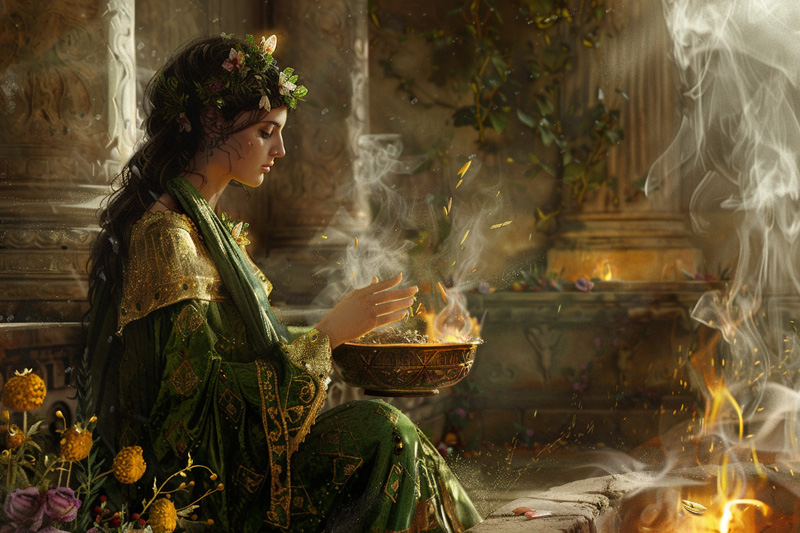KidZone Geography: Greek Mythology
About Demeter, Goddess of the Harvest
Introduction to Demeter
Demeter, one of the twelve Olympian deities in Greek mythology, is the goddess of the harvest, agriculture, fertility, and sacred law. Known for her nurturing and maternal nature, Demeter is often depicted with sheaves of wheat and a torch. She plays a vital role in ensuring the fertility of the earth and the cycle of life and death, making her a central figure in Greek religion and mythology.

Quick Facts About Demeter
What is Demeter the Greek goddess of?
Demeter is the Greek goddess of the harvest, agriculture, fertility, and sacred law. She presides over the growth of crops and the fertility of the land.
What are Demeter's sacred animals?
Demeter's sacred animals include the pig and the snake. The pig symbolizes fertility and the cycle of life, while the snake represents rebirth and renewal.
What are Demeter's symbols?
Demeter's primary symbols are the sheaf of wheat, the cornucopia, and the torch. The sheaf of wheat represents the harvest, the cornucopia symbolizes abundance, and the torch signifies her search for her daughter Persephone.
Origins and Birth
The Titanomachy
Demeter was born to the Titans Cronus and Rhea, making her a sibling to Zeus, Poseidon, Hades, Hera, and Hestia. Like her siblings, Demeter was swallowed at birth by Cronus, who feared a prophecy that one of his children would overthrow him. She was later rescued by Zeus and participated in the Titanomachy, the war against the Titans, which ended in the Olympian gods' victory.
Demeter's Role in Greek Mythology
Goddess of the Harvest and Agriculture
Demeter's primary role is as the goddess of the harvest and agriculture. She is responsible for the fertility of the earth and the growth of crops, ensuring that humans have the sustenance they need to survive. Her influence extends to all aspects of agricultural life, from planting and growing to harvesting and storing.
Mother of Persephone
Demeter is also known for her role as the mother of Persephone. The myth of Demeter and Persephone is central to her story and explains the changing seasons. When Persephone is abducted by Hades and taken to the underworld, Demeter's grief causes the earth to become barren. Persephone's return each spring brings about the renewal of growth and fertility.

Iconography and Symbols
The Sheaf of Wheat
The sheaf of wheat is Demeter's most recognizable symbol, representing the harvest and the fertility of the earth. It is often depicted in her hands or as part of her surroundings in art and literature.
The Cornucopia
The cornucopia, or horn of plenty, symbolizes abundance and nourishment. It is often depicted overflowing with fruits, grains, and flowers, highlighting Demeter's role in providing for humanity.
The Torch
The torch represents Demeter's search for her daughter Persephone. It is a symbol of her enduring love and determination, as well as the light she brings to the darkness of the underworld.
Major Myths Involving Demeter
The Abduction of Persephone
The most famous myth involving Demeter is the abduction of her daughter Persephone by Hades. Demeter's grief over Persephone's disappearance causes the earth to become barren, leading to the creation of the seasons. Eventually, a compromise is reached: Persephone will spend part of the year with Hades in the underworld and the rest with Demeter on earth, symbolizing the cycle of growth and harvest.
The Eleusinian Mysteries

Demeter is also associated with the Eleusinian Mysteries, a series of secret religious rites held in her honor. These mysteries celebrated the myth of Demeter and Persephone and promised initiates a blessed afterlife. The rituals and ceremonies of the Eleusinian Mysteries were closely guarded secrets, making them one of the most important religious traditions in ancient Greece.
The Gift of Agriculture

In another myth, Demeter is credited with teaching humanity the secrets of agriculture. She taught Triptolemus, a young prince of Eleusis, how to cultivate the earth and grow crops. Triptolemus then spread this knowledge throughout the world, ensuring the survival and prosperity of human civilization.
Demeter's Relationships and Offspring
Mother of Persephone
Demeter's most significant relationship is with her daughter Persephone. Their bond is central to Demeter's mythology and explains the changing seasons. Persephone's annual return from the underworld brings about the renewal of life and growth on earth.
Other Relationships
Demeter had relationships with other figures in Greek mythology, resulting in several offspring. She bore Plutus, the god of wealth, to the mortal Iasion. Her other children include Despoina and Arion, a divine horse.
Worship and Cult of Demeter

Temples and Sanctuaries
Demeter was worshipped throughout ancient Greece, with many temples and sanctuaries dedicated to her. The most famous of these is the Sanctuary of Demeter and Kore at Eleusis, where the Eleusinian Mysteries were held. Another significant site is the Temple of Demeter at Naxos, which was an important center of her worship.
Festivals and Rituals
Several festivals celebrated Demeter's influence over the harvest and agriculture. The most notable of these is the Thesmophoria, a fertility festival held in her honor. This festival was exclusively for women and included rituals, feasting, and sacrifices. The Haloa, another festival, celebrated the end of the harvest season and included feasting and merrymaking.
Demeter in Art and Literature
Classical Depictions
In classical art, Demeter is often depicted as a mature, matronly figure holding a sheaf of wheat or a cornucopia. These representations emphasize her role as the goddess of the harvest and her maternal nature.
Renaissance and Beyond
During the Renaissance, artists like Raphael and Titian drew inspiration from classical depictions of Demeter, incorporating her into their works. Raphael's frescoes, for example, often depict Demeter as a symbol of fertility and abundance.
Modern Interpretations
In modern times, Demeter continues to be a prominent figure in literature, film, and popular culture. She appears in various forms, from comic books and movies to television series and video games. These contemporary portrayals often explore different aspects of her character, from her nurturing nature to her fierce determination. In the Percy Jackson series, for example, Demeter is depicted as a loving and protective mother, reflecting modern interpretations of her myth.
Conclusion
Demeter remains one of the most revered figures in Greek mythology. Her role as the goddess of the harvest, agriculture, fertility, and sacred law, combined with her complex personality and significant myths, make her a fascinating character. As the embodiment of nurturing and growth, Demeter's influence extends across the divine and mortal realms. Her enduring impact can be seen in the continued fascination with her myths and the artistic representations that keep her legend alive. Through her worship, iconography, and the rich tapestry of stories that surround her, Demeter exemplifies the power and complexity of ancient Greek religion and mythology.

